Hear the pages of centuries-old books come to life in a new series featuring expert speakers reading the languages of the Middle Ages

The Author Hears the Story of Gillion de Trazegnies (detail) in Romance of Gillion de Trazegnies, after 1464, Lievan van Lathem. Tempera colors, gold, and ink on parchment, 14 9/16 x 10 1/16 in. The J. Paul Getty Museum, Ms. 111, fol. 9
Medieval manuscripts were prized by their original owners and users both for their luxurious paintings and for the carefully hand-written words that filled the majority of their pages. The texts we encounter in these handmade books range from devotional to scientific, liturgical to historical, theological to philosophical.
![]() This new series celebrates those texts by bringing them to life through sound. In this project we join our colleagues at the British Library, who have collected hours of fascinating audio from lands and literature across the ages.
This new series celebrates those texts by bringing them to life through sound. In this project we join our colleagues at the British Library, who have collected hours of fascinating audio from lands and literature across the ages.
Word and Image
When the words of medieval manuscripts were read or sung aloud, the visual content of the accompanying illuminations came to life in rich and meaningful ways.
In the image below, for example, medieval readers would have said (aloud or in their minds) the Latin words enclosed in the golden box: Et lux perpetua luccat eis (And let light perpetually shine upon them [the righteous]). The reader would have also contemplated this meditative hymn in relationship to the tormented cries of Dives, written in red letters on a white banderole: Pater Abraham miserere mei… “Father Abraham, have mercy on me.”
Looking at the full manuscript page, we find Abraham accepting into heaven the soul of the impoverished Lazarus, whom the wealthy Dives shunned from his bountiful table.
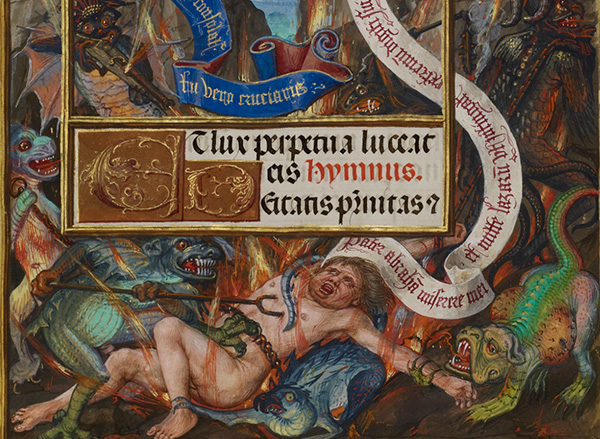
Lazarus’s Soul Carried to Abraham (detail) in the Spinola Hours, about 1510–20, Master of James IV of Scotland. Tempera colors, gold, and ink on parchment, 9 1/8 x 6 9/16 in. The J. Paul Getty Museum, Ms. Ludwig IX 18, fol. 22
Hearing Medieval Texts
Medieval Manuscripts Alive is a new occasional series for The Getty Iris that aims to give a voice to the texts in the Getty’s manuscripts collection. Working with specialists in the languages spoken in the Middle Ages, we in the Manuscripts Department look forward to sharing the sounds and rhythms of the following:
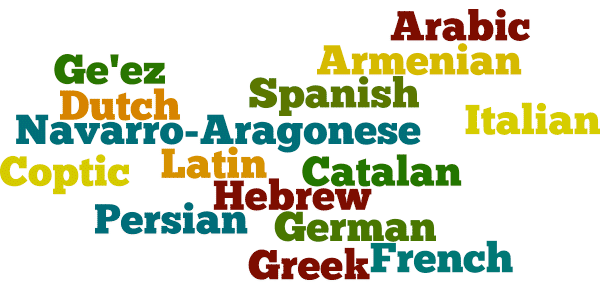
…and of course English.
Each reading will be accompanied by a translation into English and a brief description of the relationship between the text and image.
A Sample of Medieval Languages
As a preview, here are a few pages from our collection whose text is written in medieval variants of languages still spoken today.
Navarro-Aragonese
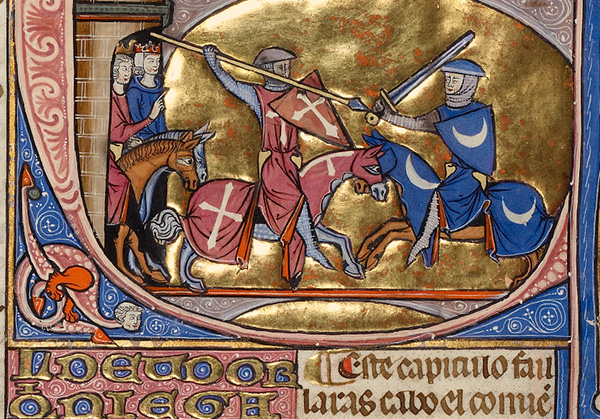
Initial E: An Equestrian Duel Between a Creditor and a Debtor from Vidal Mayor (Michael Lupi de Çandiu, scribe), about 1290–1310. Tempera colors, gold leaf, and ink on parchment, 14 3/8 x 9 7/16 in. The J. Paul Getty Museum, Ms. Ludwig XIV 6, fol. 169v
Italian
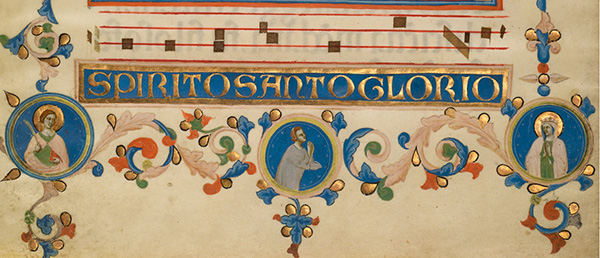
Pentecost (detail) in the Laudario di Sant’Agnese, about 1340, Master of the Dominican Effigies. Tempera colors, gold leaf, and ink on parchment, 16 15/16 x 12 ½ in. The J. Paul Getty Museum, Ms. 80, verso
German

The Writing on the Wall at Belshazzar’s Feast (detail) in Rudolf von Ems’s World Chronicle, about 1400–10. Tempera colors and ink on parchment, 13 3/16 x 9 ¼ in. The J. Paul Getty Museum, Ms. 33, fol. 214v
Armenian

Decorated Incipit Page (detail) in a Bible, 1637–38, Malnazar and Aghap’ir. Tempera colors, gold paint, and gold leaf on parchment, 9 15/16 x 7 3/16 in. The J. Paul Getty Museum, Ms. Ludwig I 14, fol. 3
Introducing the Ge’ez Language

Professor Getatchew Haile in the Getty Museum’s Manuscripts Study Room with an Ethiopian Gospel Book from about 1480–1520
For our first reading in the series, we are pleased to present Dr. Getatchew Haile, Professor Emeritus at St. John’s University in Collegeville, Minnesota. He is a specialist in Ge’ez, the official language of various historical kingdoms and courts in Ethiopia.
Today the language is primarily used in the liturgical services of the Ethiopian Church. On a recent visit to the Getty, Professor Haile was kind enough to read from one of our Ethiopian Gospel Books (made about 1480–1520), which is on view in the exhibition Heaven and Earth: Byzantine Illumination at the Cultural Crossroads through June 22.

Saint Luke and Decorated Incipit Page from a Gospel Book, about 1480–1520. Tempera on parchment, 13 9/16 x 10 1/16 in. The J. Paul Getty Museum, Ms. 105, fols. 116v–117
The Text The text read by Professor Haile consists of the opening words to Luke’s Gospel, in which the author explains that he has carefully investigated the events about which he is going to write. Then begins a passage often read at Christmas time, explaining the Roman context for Christ’s birth.
The Imagery In the facing miniature, Saint Luke sits poised to begin writing his Gospel with pen and parchment in hand.
We hope that you will join us on this journey through text and image. We look forward to the sounds of the spoken word bringing new life to our medieval illuminations.
My sincere appreciation is due to all in the Manuscripts Department for their input on and contribution to this series, to Annelisa Stephan for recording and editing the audio files, to Robert Checchi for designing our Medieval Manuscripts Alive emblem, and to Professor Haile and all future readers for their time and passion for language.
_______
Medieval Manuscripts Alive is an occasional series featuring readings from Getty manuscripts by specialists in the languages of the Middle Ages.

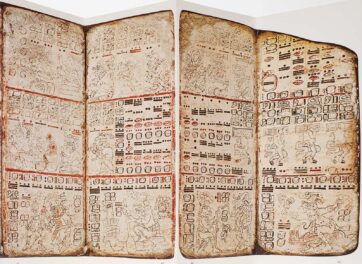

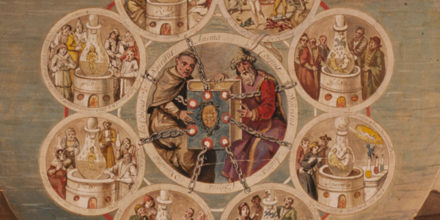
Comments on this post are now closed.